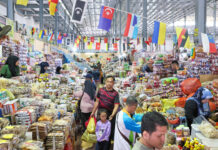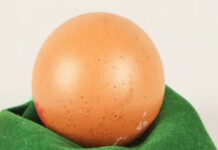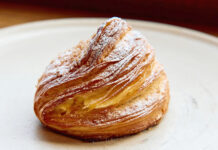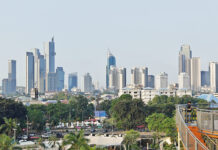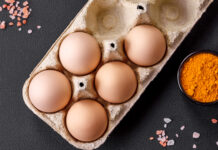SINGAPORE (CNA) – Malaysians and Singaporeans share an equatorial climate, a multicultural society and a never-ending love of insisting that their food is better, even when, for all intents and purposes, it is exactly the same dish.
The confusing part, though, is that two – and even three or four – entirely unrelated dishes can sometimes have the same names. I’m referring here to the curious case of “Hokkien mee”.
Imagine my feelings of shock and betrayal when I visited Kuala Lumpur recently and discovered that I’d been lied to my whole life about “KL Hokkien mee”.
While Singapore’s “Hokkien mee” is a dish of pale-coloured noodles fried in seafood stock and finished with calamansi juice, the “KL Hokkien mee” that is commonly found on zi char menus here consists of flat yellow noodles mired in gloppy brown gravy containing enough corn starch to powder the slopes of a Niseko ski resort. It is not a dish I would feed my worst enemy. If diplomacy were noodle dishes, I would call “KL Hokkien mee” a terrible smear campaign on Malaysia.
In KL, I learned, the dish that’s referred to as “Hokkien mee” doesn’t come with gravy at all. The noodles are fried in dark sauce with crispy lard bits and plenty of wok hei. You can choose whether you want regular noodles, bee hoon, mee tai mak or a mix, although the correct choice is “mix”. The unctuous sauce coats every noodle darkly with its glistening umami-ness, and the charred breath of the wok’s flame imparts a hint of savoury smokiness. It is a triumph of ugly-deliciousness.
“KL Hokkien mee” in Singapore, I suppose, is the equivalent of “Singapore noodles” everywhere in the world that is not Singapore. If you’re a tourist and you tell a Singaporean that you love Singapore noodles, you will be met with a blank stare, not least because no self-respecting Singaporean would ever lay claim to the fried bee hoon dish with egg, vegetables, meat, and a dash of curry powder that originated in Hong Kong and proliferated to Chinese take-out restaurants all over the Western world.
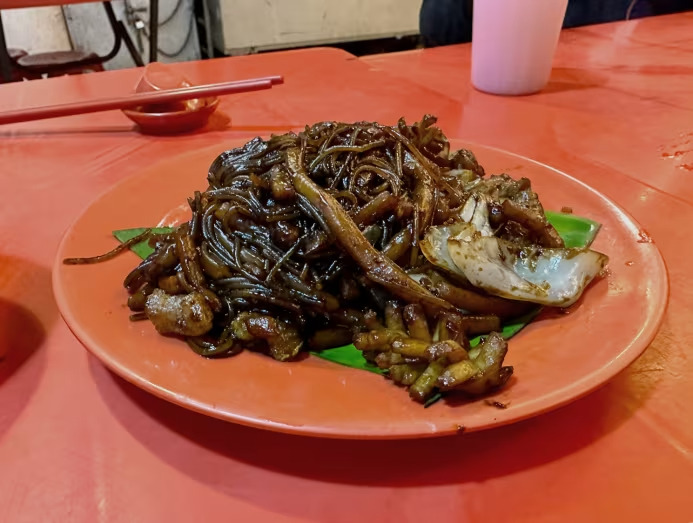
It’s safe to say that that’s one dish Malaysians wouldn’t deign to fight with us over. “You can have that one!” they would collectively say, while backing away and holding their palms out in front of them.
Let’s not even get started on Penang Hokkien mee and why it’s actually similar to the dish we know simply as prawn mee here in Singapore: Noodles in a prawn broth.
Those Hokkiens! They sure know how to confuse, amuse and make some great noodles.
Cultural historians, of course, will point out that it’s futile to argue over who had which dish first, since our two countries are so geographically close. There are certainly variations on dishes, like whether the egg served with nasi lemak should be hard boiled, a sunny-side-up or a thinly-rolled omelette; along with variations on sambals and other condiments.
It is a definitive fact, though, that Singapore had the McDonald’s nasi lemak burger first, so we win on that front – or lose, depending on whether you fall into the 50 per cent who like it or the 50 per cent who think it’s a travesty.
Meanwhile, during my visit to KL, I had the privilege of dining at Eat and Cook, one of Malaysia’s fastest rising young restaurants, and meeting chefs Lee Zhexi and Soh Yongzhi. They served me some creative interpretations of dishes they grew up with, like a deconstructed oyster omelette; “chee cheong fun” made with cuttlefish and served with jicama, sakura ebi, shallots and green chilli; and a delicious apam balik-inspired dessert. No old-school dish is safe from their “modern Malaysian” chef-hands, and this has earned them the 79th spot on the Asia’s 50 Best Restaurants’ extended list as well as a “Michelin-selected” accolade.
I asked them the burning question of whether Malaysia’s food or Singapore’s food was better, and after throwing back their heads and laughing, they diplomatically lied that “it’s just different”.
The difference lies in the seasoning, they both opined. Malaysia’s food is heavier on the seasoning, which they prefer because that’s what their palates are used to. For example, Soh said he’d pick Malaysia’s oyster omelettes over Singapore’s, because he considers them more flavourful.
Lee said he prefers a certain soup dish in Malaysia, because “I like it herby”. The Singaporean version is instead on the peppery side. “It’s just a preference,” and not about which version is better, he said.
“If you grew up eating food in Malaysia, you’ll prefer Malaysia’s food, and if you grew up in Singapore, you’ll prefer Singapore’s food,” Lee reasoned. A no-brainer, right?
Singapore’s chef Marvas Ng of modern Asian restaurant Path, who was also in Kuala Lumpur for a collaboration with Eat and Cook, proved Lee’s point by saying that there was one restaurant serving the soup dish there that he really enjoyed eating at because the soup tasted like a cross between the herbal and peppery versions.
For the most part, I agree with the logic that each individual palate prefers the flavours and textures it is accustomed to. – MAY SEAH






